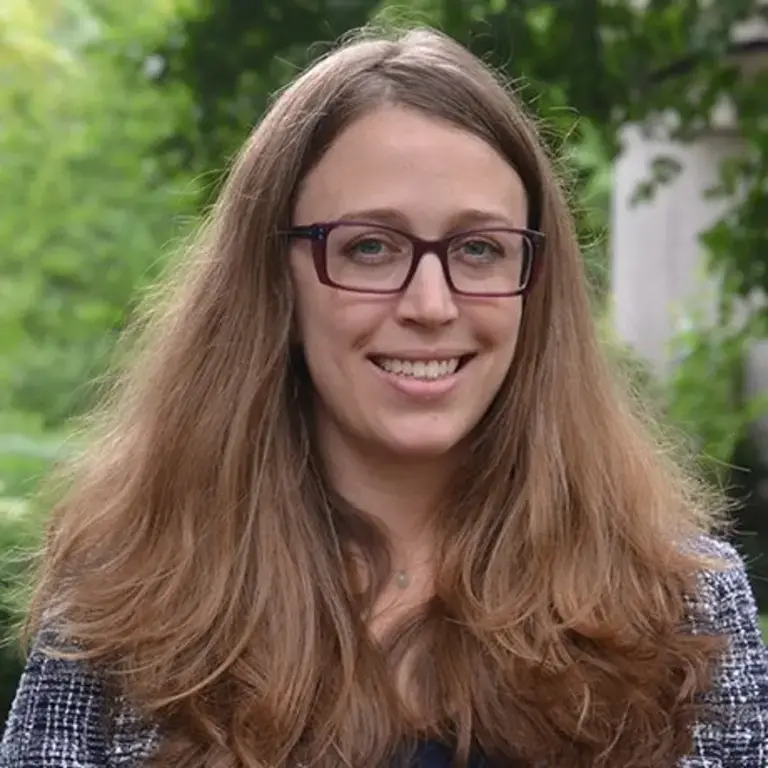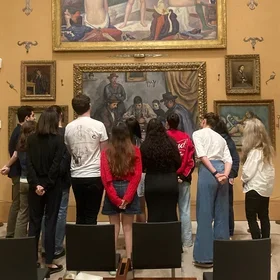The last time I was with students in a physical classroom was on March 4, 2020. When campus closed on March 9, the University collectively pivoted to remote teaching and learning in a flash; time moved at warp speed yet slow motion simultaneously. After more than a year of teaching online, it is essential to pause and reflect on the challenges we faced, the practices that worked well, and the newly cultivated habits we might take forward.
Indeed there are many challenges in the Zoom environment. Teachers rushed headlong into learning new skills for a new-to-many-of-us modality—screen sharing, managing breakout rooms, creating Canvas modules, and proctoring online exams. We learned that Zoom classes move, if not actually like molasses in January, then at least two times slower than classes meeting in a physical space. At the American Language Program, ways of making the remote space more dynamic included sharing Google Docs so all students could contribute to a group text, color coding grammar lessons, poring over chat transcripts for qualitative data to be used in the next writing class, or preparing polls to add some variety to vocabulary practice. And we did all of this fearlessly in the face of potential Zoom bombing and the long-term threat of burnout.
At first I was overwhelmed. So I went back to basics and thought about my Teaching Philosophy.
Our students, too, faced challenges. Those who stayed in New York suddenly found themselves isolated. Because of the threat of borders shutting down around the globe, some students withdrew. Some students who made it home and continued classes experienced major time zone differences. Some were compelled to go into mandatory quarantine. Many people felt the effects of technology gaps; suddenly students who are also parents had to co-manage laptop time with their children learning remotely. Other inequality issues came to the forefront. Some lucky individuals could take refuge in the family vacation home with a gorgeous sunlit room while many others were cramped into shared spaces replete with a menagerie of background noises and sometimes guest appearances from four-legged friends. Worse, some may have caught the virus, lost loved ones, or experienced heightened anxiety and depression.
At first I was overwhelmed. So I went back to basics and thought about my Teaching Philosophy, which was a useful exercise that I highly recommend. What did I already know and rely on in my own pedagogy that I could transmit into the Zoom Room? The main bullet point of my Philosophy that I focused on was that we teach individuals—not a mass of cookie cutter people but a collection of unique and particular humans. For example, one student asked me to send him typed feedback instead of my usual handwritten comments on essays; it was difficult for him to read handwriting on his device. Another student sometimes asked to turn his video off before he felt fully awake; he was attending class 14 hours ahead. One class asked for more opportunities to give peer feedback; they loved collaborating because they felt alone in social isolation. Flexibility in my planning and practice has been key in the online environment.
Further insights came to me when I began studying at Teachers College in Spring 2021. Even in a class I loved, I experienced how exhausting it is as a student to keep focus on the screen for a two-hour class. Stretch breaks are absolutely necessary and appreciated.
Students deserve grace, and teachers deserve it too. All of the participants in a classroom are making a bet—by coming together and by dedicating ourselves to our learning objectives, we will, as Elaine Scarry writes, “increase the chance that one will be looking in the right direction when a comet makes its sweep through a certain patch of sky.” In other words, we are looking for those seemingly miraculous moments when students grasp the new knowledge and skills that teachers are trying to make graspable. To continuously do this very precarious, precious work in the middle of a worldwide wave of stress and trauma is evidence of the resiliency of students and teachers alike.
On top of pandemic stress, during this time the United States has been plagued by horrific incidents of racial discrimination and violence. Students have needed a place to discuss and process their own feelings about these events. Sometimes I made space in the planned agenda for students to talk to each other about these important issues. (It’s not like they could sit on the Low Library steps to talk over Sweetgreen or Pret a Manger.)
This idea of “making space” is something that will stay with me in the next phase of teaching, no matter how COVID dictates that the phase will go. My classroom atmosphere became less rigorous in the sense that if someone in a different time zone overslept their alarm, I didn’t rib them for coming late. If someone handed in an assignment after the due date, I didn’t complain. In breakout rooms, sometimes students were “off topic” because they craved the space to make small talk, which Harvard Business Review reports, “helps people feel emotionally connected and boosts collaboration and creativity.” As long as students came to class with the dedication to study and the willingness to participate in search of our particular comet, I was satisfied, and I felt that being empathetic and considerate only increased rapport and mutual respect in the end.
In my final class of the Spring 2021 semester, each student shared a cultural recommendation—a book, movie, restaurant, or experience—and we compiled a class list of these recommendations for each of us to take with us as a co-created parting gift. This illustrated how close we had become even in the remote context. The more we can humanize our online world, the more comfortable and effective our Zoom classrooms can be. It is crucial that we make space for students to be their unique selves, no matter the modality.
The views expressed are those of the author and do not necessarily represent the views of any other person or entity.



